BirdNote®
Air Date: Week of January 11, 2013
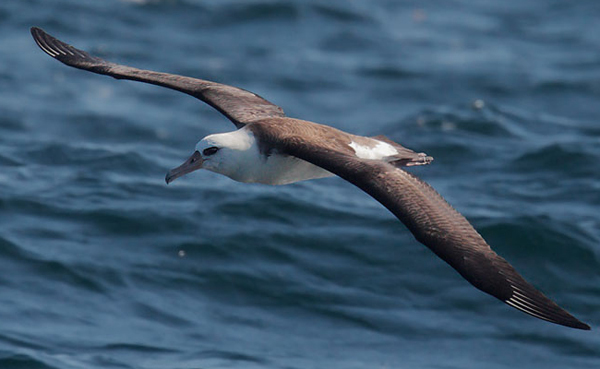
A Layson Albatross in flight. (Photo: © Tom Grey)
Though it's the middle of the northern winter, the large seabirds called Layson Albatrosses are busy raising chicks, as Michael Stein reports in BirdNote®.
Transcript
CURWOOD: Now American Samoa sounds like an inviting place to go visit at this time of year. And the same might be well said of another Pacific Island several thousand miles to the north. Here's Michael Stein with today's Birdnote®.
[LAYSON ALBATROSS - GROANING, BILL CLACKING, WHINNIES]
STEIN: Welcome to Midway Atoll! More than 1,200 miles northwest of Honolulu – winter home to nearly a million nesting albatrosses. Gathered together, they make a splendid racket.
[LAYSON ALBATROSS MOANS, WHINNIES, BILL CLACKING]
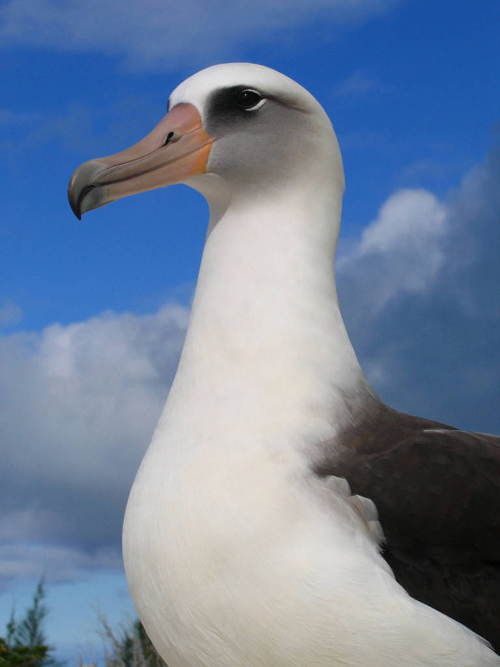
A Layson Albatross (Photo: USFWS David Patte)
STEIN: Most are Layson Albatrosses, huge, handsome seabirds with white bodies and dark, saber-shaped wings six feet across. Laysons return to Midway in November to breed. Roughly 450,000 pairs wedge their way into a scant 2.5 square miles of land surface, creating one of the world’s most spectacular seabird colonies.
[LAYSON ALBATROSS SOUNDS: WHINNIES, BILL CLACKING]
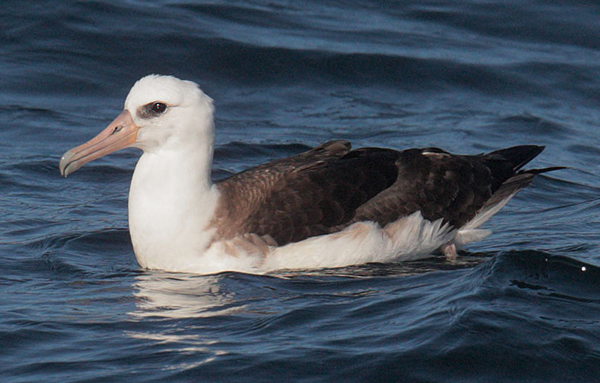
A Layson Albatross afloat. (Photo: © Tom Grey)
STEIN: It may seem curious that Laysons nest in winter, when most birds nest in spring and summer. Well, the big birds forage mostly at night, so the longer hours of darkness in winter provide more time to find food for their rapidly growing chicks.
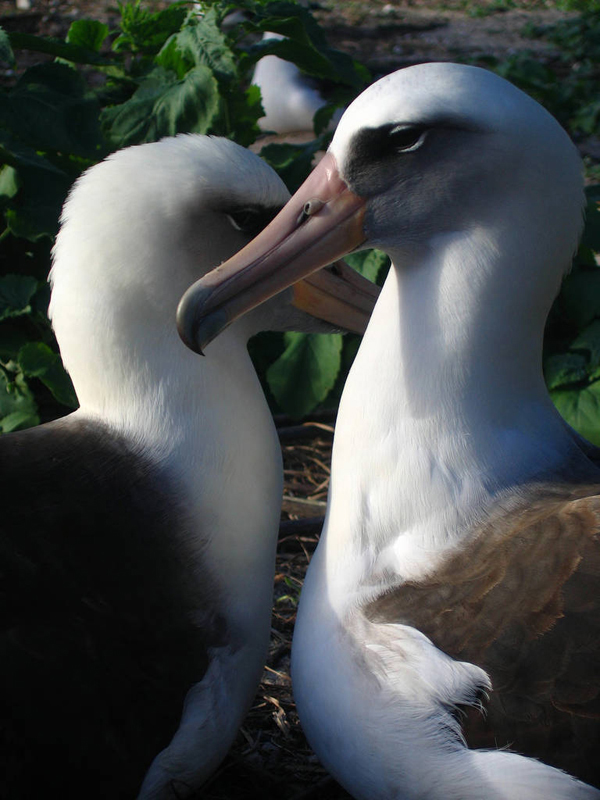
A Layson Albatross pair. (Photo: USFWS David Patte)
Beginning in late January, when the single chick hatches, both parents will feed it for the next six months. And by mid-May, it may weigh seven pounds, even heavier than an average adult. The young bird will need that extra fat and energy, as it learns to fly.
[LAYSON ALBATROSS SOUNDS: MOANS, WHINNIES, BILL CLACKING]
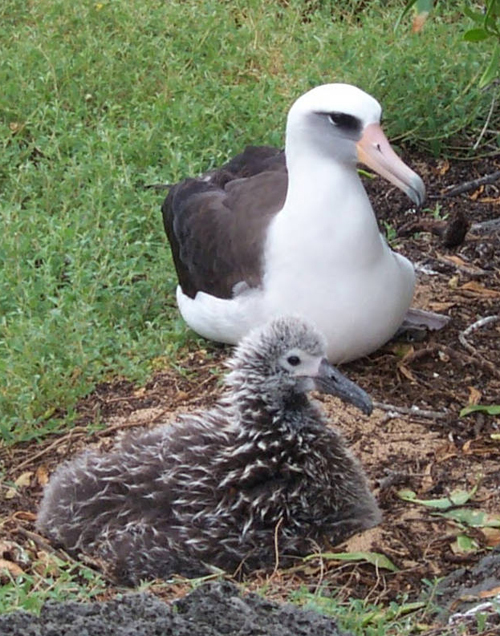
A Layson Albatross with a chick. (Photo: USFWS Chuck Swenson)
STEIN: By August, the once-noisy colony is all but empty, the spectacle complete, as the albatross multitude returns to life on the ocean – until next winter.
I’m Michael Stein.
[Written by Bob Sundstrom
Bird sounds provided by The Macaulay Library of Natural Sounds at the Cornell Lab of Ornithology, Ithaca, New York. Layson Albatross 959-2 (all sounds) recorded by E.Booth
Producer: John Kessler
Executive Producer: Chris Peterson
© 2013 Tune In to Nature.org January 2013 Narrator: Michael Stein]
Links
Living on Earth wants to hear from you!
Living on Earth
62 Calef Highway, Suite 212
Lee, NH 03861
Telephone: 617-287-4121
E-mail: comments@loe.org
Newsletter [Click here]
Donate to Living on Earth!
Living on Earth is an independent media program and relies entirely on contributions from listeners and institutions supporting public service. Please donate now to preserve an independent environmental voice.
NewsletterLiving on Earth offers a weekly delivery of the show's rundown to your mailbox. Sign up for our newsletter today!
 Sailors For The Sea: Be the change you want to sea.
Sailors For The Sea: Be the change you want to sea.
 The Grantham Foundation for the Protection of the Environment: Committed to protecting and improving the health of the global environment.
The Grantham Foundation for the Protection of the Environment: Committed to protecting and improving the health of the global environment.
 Contribute to Living on Earth and receive, as our gift to you, an archival print of one of Mark Seth Lender's extraordinary wildlife photographs. Follow the link to see Mark's current collection of photographs.
Contribute to Living on Earth and receive, as our gift to you, an archival print of one of Mark Seth Lender's extraordinary wildlife photographs. Follow the link to see Mark's current collection of photographs.
 Buy a signed copy of Mark Seth Lender's book Smeagull the Seagull & support Living on Earth
Buy a signed copy of Mark Seth Lender's book Smeagull the Seagull & support Living on Earth

